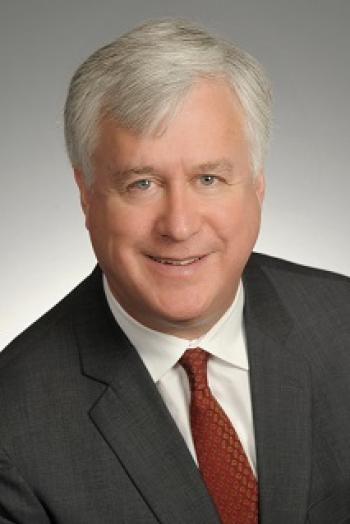Image Caption
By Shari Narine
Windspeaker Contributor
TORONTO
Anishinaabe Elders played a key role in the disciplinary hearing of an Ontario lawyer accused of unprofessional conduct in his representation of survivors under the Indian Residential School Settlement Agreement.
The law society had alleged that Keshen had “committed misconduct in, among other things, how he kept books and records, amounts he billed clients, his preparation for Indian Residential School hearings and his communications with his clients.”
The tribunal for the Law Society of Upper Canada met with Elders before meeting with Kenora-based lawyer Doug Keshen on April 25 during what’s called “an invitation to attend” (ITA) and then included two Elders in a second ITA, usually a private affair between the tribunal and the lawyer being disciplined. The Elders provided their own advice to Keshen.
The disciplinary hearing became an ITA when the law society and Keshen came to a mutual agreement.
“This modification of the ITA is one way in which we can interpret the (Law Society) Act so that the Tribunal process can be more flexible and adapted to the needs of Indigenous people and communities,” wrote David Wright, chair for the tribunal, in a seven-page Oral Reasons for Decision released April 27.
Not only were the Elders included in the ITA, but the tribunal took other steps “to incorporate Anishinaabe culture and values into the process.”
The hearing room was arranged in a circle, and Elders said opening and closing prayers and performed smudges. The tribunal members also participated in a sweat lodge in the evening of one of its earlier hearing dates. The tribunal had held 27 days of hearings since June 2016.
Wright observed in his ruling that the adversarial process used by the tribunal left many residential school survivors unhappy with the results.
“We often wished we could adapt the process to something that would allow the survivors to tell their stories in a more meaningful way for them. That was hard given the legal constraints.”
The law society said that its decision to support a mutual agreement was partially based on the impact the process was having on the residential school survivors.
“The hearing was stressful for many of the complainant witnesses and this stress warranted a reconsideration of the nature and goals of the prosecution,” wrote Wright, referencing the law society’s decision.
“The Law Society … states the rules of evidence led to a gap between what complainants wanted to say to the Tribunal and what it was possible for them to say.”
“We assessed the issues and the way the evidence was going, and continuing with the case this way, the better results based on counsel’s advice was to resolve it this way,” said Paul Schabas, treasurer and head of the law society.
Schabas said the charges against Keshen were “quite serious …. We’re always concerned, especially when we’re dealing with communities of clients, who may be particularly vulnerable. We’re particularly concerned about ensuring that they receive the highest form of service and that the lawyers that people go to are people they can rely on and trust.”
Keshen, in turn, alleged the law society did not conduct its investigation and the hearing properly.
Under the mutual agreement, Keshen will have his practise closely supervised over the next couple of years; submit to various audits and other requirements of the law society; undertake course work involving cultural competency and dealing with Indigenous people; and attend one more meeting with the tribunal where he will be given advice, guidance and direction on how to improve his practise, said Schabas.
Keshen may also be required to participate in restorative justice circles, if so required by the communities of the residential school survivors he represented. The law society will fund the circles organized and led by the Elders.
Schabas said what has happened with Keshen has underscored the law society’s need to adapt to Indigenous laws and Indigenous practices.
“We want to learn much more about how we can adopt and adapt our processes to rebuild trust with the Indigenous community and adopt procedures that the Indigenous community is comfortable with and familiar with and respects,” he said.
To this end, the law society struck an Indigenous advisory group last year, which includes a council of Elders and experienced Indigenous lawyers. Schabas said the law society will also be working on an Indigenous framework along with meeting with Indigenous communities to “consult widely to inform ourselves.” Schabas said these steps are in keeping with the calls to action directed to the legal profession by the Truth and Reconciliation Commission.
“I can tell you that as head of the law society, this is one of my highest priorities,” he said.
Schabas said the complaint against Keshen is “one in a number” received by the by law society from Indian residential school survivors for the services they received.
“Some of those have warranted further regulatory action and there is already litigation going on against one of the other lawyers and there are a number of other active investigations,” he said.
Wright stated that the evidence they heard portrayed Keshen as “deeply committed to First Nations communities and individuals he serves and helps with their lives and issues in a way that goes beyond the specific legal problems they retain him for.”
In September 2013, four Independent Assessment Program claimants expressed concerns on how Keshen had paid out their IAP compensation. An investigation of Keshen by the Court Monitor appointed under the IRSSA began in 2014 and the monitor concluded that Keshen had been falsely accused of misappropriating his clients’ awarded compensation.
Schabas said the law society took action against Keshen not because of IRSSA concerns but because he failed to “meet standards we expect of lawyers in representing their clients.”

